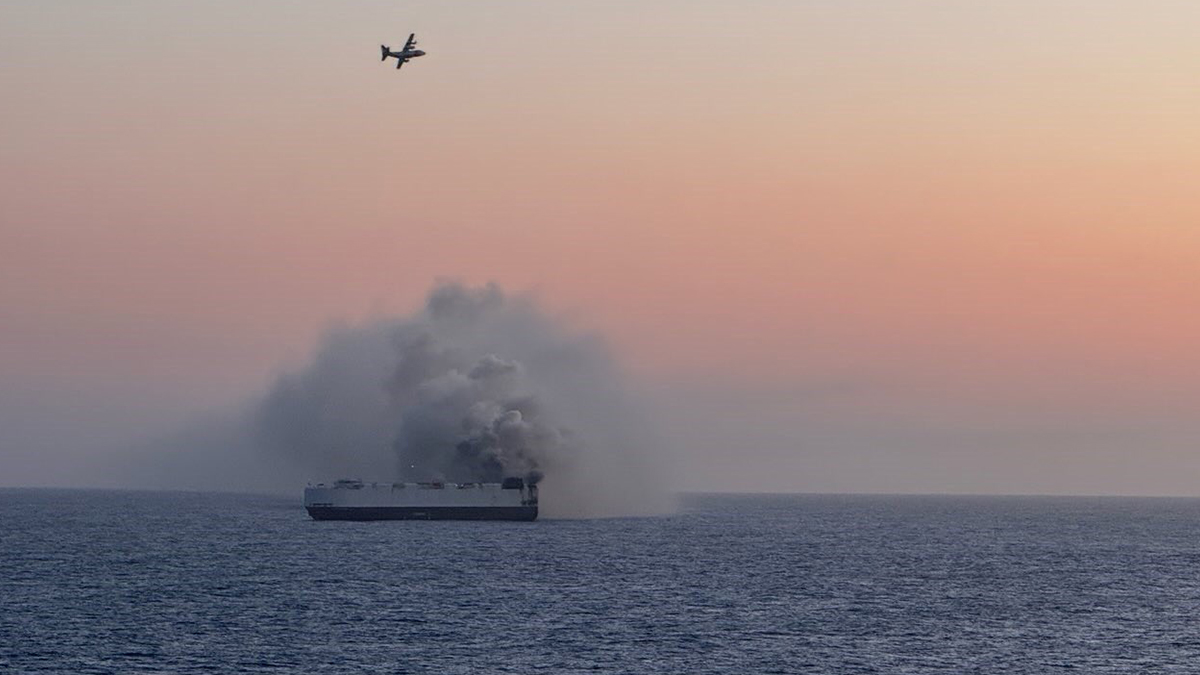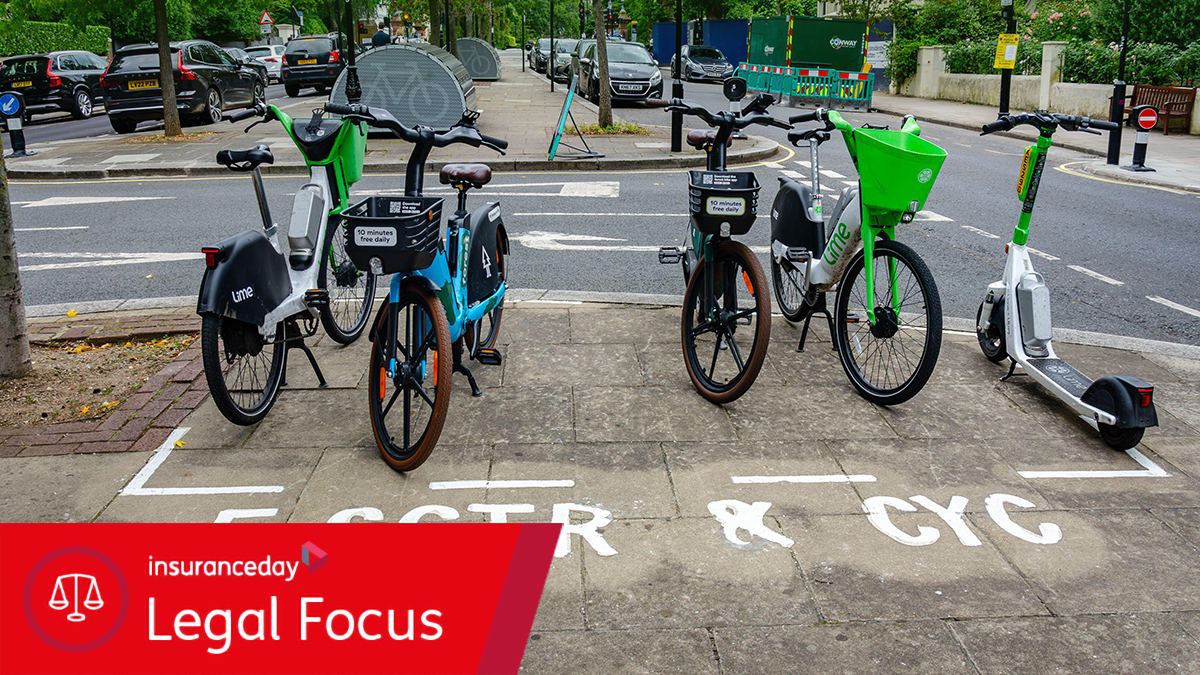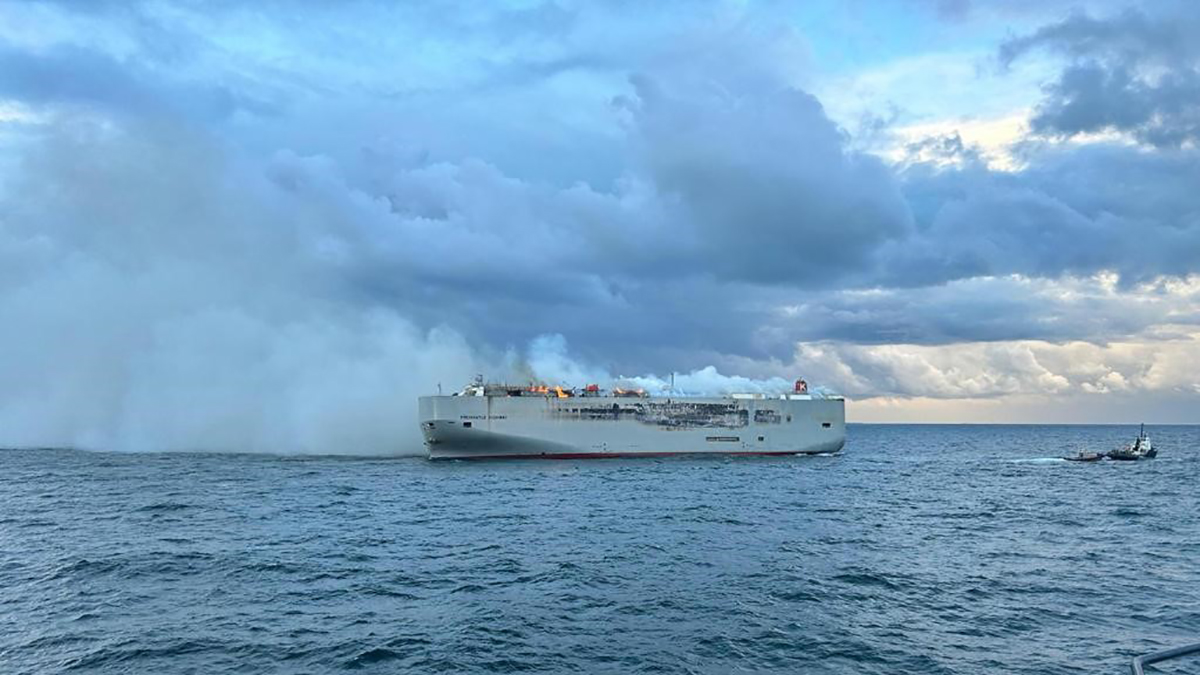The burning issue of transporting EVs by sea
How to transport electric vehicles safely by sea and how to alleviate the workload of crews onboard are two related topics in Munich Re’s latest Marine Trend Radar
Fire safety will be a key priority for the shipping industry over the coming years, with improved regulatory frameworks and technological advances shaping the industry's response to these challenges
The shipping industry is facing significant changes that bring with them new risks. Munich Re's latest Marine Trend Radar 2025 analyses these challenges and offers in-depth insights into current and future trends in the shipping and logistics industry.
The Marine Trend Radar was originally developed as an internal tool for identifying new trends. It has since become a renowned external publication that provides practical recommendations for action and serves as a basis for discussions within the industry and for roundtable discussions with clients.
Two key topics in this year's edition are the transport of electric vehicles (EVs) by sea and the workload of crews on board.
The transport of EVs has increased significantly worldwide in recent years. By 2030, EVs – fully battery-powered vehicles and plug-in hybrids – are expected to account for around two-thirds of all new car sales. EVs are mainly transported on specialised ro-ro ships, on pure car and truck carriers (PCC/PCTC). On shorter routes, ropax ferries, which carry both vehicles and passengers, are also used to transport EVs. Ro-ro ships are similar in design to floating parking garages, with thousands of vehicles parked close together, which makes firefighting particularly challenging.
EVs today typically use rechargeable lithium-ion batteries (LIBs) that convert chemical energy into electrical energy. However, these batteries pose specific risks: in rare cases, manufacturing defects or external influences can cause short circuits that trigger a dangerous chemical chain reaction known as thermal runaway. Other causes, such as heat, can also lead to thermal runaway without a prior short circuit. The temperature rises rapidly and uncontrollably, and flammable gases are released, which can lead to fires that are difficult to extinguish with typical fixed-installed systems.
Although EVs are less likely to catch fire than conventional vehicles, vehicle fires on ro-ro ships pose a particular risk. Studies show fires in the maritime sector are the most common cause of costly damage: approximately 20% of total losses are attributable to fires. Transporting EVs is not inherently more dangerous, but it does require adapted fire protection measures and special firefighting strategies.
‘Fixed first’ solution
Studies show water-based systems can be particularly effective in fighting EV fires. These sprinkler systems work with high-pressure water mist. They quickly lower the temperature, prevent the spread of flames, and buy valuable time for the emergency crew. They can also suppress flammable gases, reducing the risk of reignition.
A holistic firefighting strategy for lithium-ion batteries therefore includes not only extinguishing the actual fire but also handling potentially explosive gases. If the released gases do not ignite and burn immediately, the risk shifts from a fire to a potential explosion.
The discussion on how to best take care of EV fires is also taking place at the international level, for example within the International Maritime Organization (IMO). The updated guidelines of the International Union of Marine Insurance reflect these developments and underscore the importance of early detection and the use of water mist systems for effective fire protection.
The focus must therefore be on prevention. Continuous monitoring, early detection, and optimisation of ship layouts are of crucial importance. The development of innovative fire detection and extinguishing technologies, such as artificial intelligence-controlled thermal imaging systems, can help to detect fires earlier and combat them effectively. Experience also shows fire barriers can fail earlier than intended in practice. Smaller fire compartments and more controllable zones in the cargo holds should be discussed further.
Close co-operation between vehicle and battery manufacturers, shipping companies, and insurers is essential to establish comprehensive safety protocols that meet the specific requirements of EVs. Setting industry-wide standards for their safe transport promotes best practices and ensures compliance with regulations. A direct interface to the vehicles' battery management system would enable a new level of monitoring: early warnings of temperature rise, or cell deviations could be transmitted to the ship's command in real time, significantly reducing response times in an emergency. The state of charge also plays a key role, especially when transporting used vehicles.
The crew is the first line of defence in fighting fires and is forced to act independently. Since they cannot replace a professional fire department, the effectiveness of risk management depends on two factors: the level of training of the crew and the equipment available. The personal protective equipment on board has limitations and cannot be used for sustained systematic firefighting inside the ship, as a professional fire department would do.
Practical training measures can better prepare the crew, but even well-trained crew members reach their limits, not only because of psychological stress, but also because of technical obstacles. To manage the specific risks, investments in upgrading firefighting equipment are also necessary. Therefore, international regulations for firefighting equipment on board should also be reviewed.
High workload on board
The “fixed first” strategy, which aims to quickly control and fight fires with permanently installed extinguishing systems, can increase safety but does not fundamentally reduce the crew's workload and risk. According to the Marine Trend Radar 2025, staff shortages on board and the need to promote an inclusive culture are major challenges in the shipping industry.
The Global Maritime Forum, an international organisation for sustainable maritime trade, supports this argument. It has developed guidelines for sustainable crewing practices to improve working conditions at sea and reduce the projected shortage of 90,000 trained seafarers by 2026.
High workloads and understaffing on board are further challenges for the shipping industry. With only around 1.9 million seafarers worldwide, the industry is dependent on qualified personnel. Labour shortages have become an urgent problem for the industry because of demographic changes and the increasing complexity of shipping.
Long working hours, the often weeks-long isolation of crew members on board, and the responsibility for the safety of the ship and its cargo lead to high psychological stress for the crew and a high turnover rate. This results in an increasing shortage of qualified personnel on board. In addition, crew fatigue is a serious problem: 20% of all incidents involving fatalities are related to fatigue. Burnout and other mental illnesses are also widespread on board and can compromise safety. These challenges are exacerbated by the growing need for qualified personnel to handle advanced technologies and automated systems on board ships and in ports.
Embracing innovation
The increasing frequency of fires on car carriers and the associated costs have made fire safety a key priority for the shipping industry. In the coming years, improved regulatory frameworks, technological advances, and greater co-operation between stakeholders should shape the industry's response to these challenges.
According to a study by the Fraunhofer Institute for Ceramic Technologies and Systems, sodium-ion batteries already meet the criteria for less flammable batteries and thus represent an alternative to lithium-ion batteries. With dissolved sodium instead of lithium in the electrolyte, these batteries have a lower energy density but allow a higher charging current and are less prone to ignition. They are also cheaper to manufacture, more readily available, and contain neither copper nor cobalt, which simplifies recycling. There is still a lack of investment and bureaucratic hurdles, but they could represent a promising alternative to lithium-ion batteries.
However, the shipping industry still has to deal with existing lithium-ion batteries. The IMO plans to issue binding regulations by 2027. Classification societies are also adapting their requirements. Even though fixed fire extinguishing systems are already mandatory on board, practical experience shows that the choice of extinguishing agent can make a significant difference. Water-based systems have proven to be particularly effective in controlling vehicle fires in international exchanges. It is hoped their use will continue to gain acceptance.
Benedikt Funke is a senior marine underwriter at Munich Re



